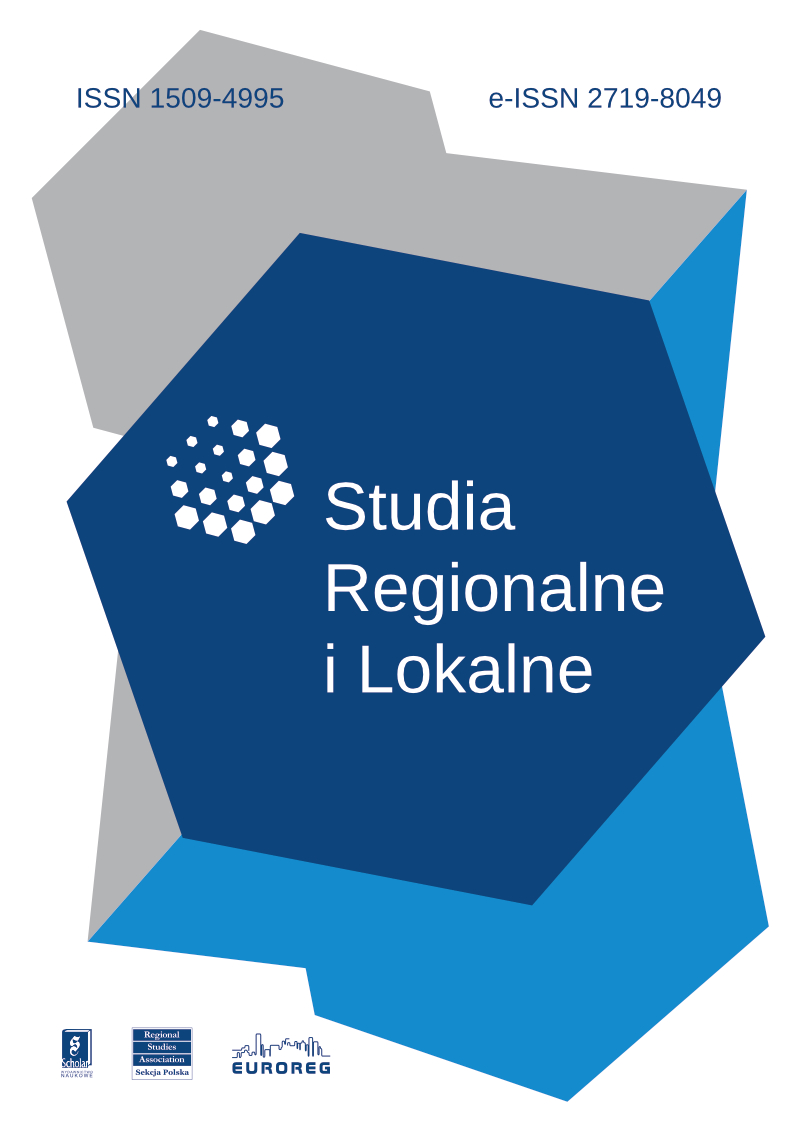Zróżnicowanie przestrzenne statusu społecznego mieszkańców Łodzi
Struktura społeczno-przestrzenna, rozumiana jako przestrzenne zróżnicowanie statusu społecznego i materialnego mieszkańców miasta, jest obiektem zainteresowania zarówno socjologii miasta, jak innych dyscyplin zwłaszcza geografii ekonomicznej i geografii miast. Obecnie zjawiska polaryzacji i segregacji społeczno-przestrzennej w miastach zachodnich traktowane są jako następstwa globalizacji. Równocześnie zmiany zachodzące w wyniku transformacji systemowej spowodowały zwiększenie skali i dynamiki przekształceń struktury społeczno-przestrzennej w miastach wschodnioeuropejskich, których struktura była bardziej homogeniczna. Artykuł jest próbą określenia stopnia i rodzaju różnic statusu społecznego mieszkańców poszczególnych stref i osiedli w przestrzeni miejskiej Łodzi. Problem ten ma dwa aspekty. Pierwszym jest stopień zróżnicowania lub "krystalizacji" struktury społeczno-przestrzennej. Można przyjąć, że jest on tym wyższy, im istotniejsze statystycznie różnice zachodzą między zmiennymi statusu społecznego mieszkańców poszczególnych osiedli i rejonów miasta. Drugi aspekt omawianego problemu ma charakter opisowy. Niezależnie od statystycznej istotności różnic zachodzących pomiędzy danymi osiedlami można je uszeregować pod względem średnich wartości poszczególnych zmiennych statusowych, co pozwoli na identyfikację "gorszych" i "lepszych" dzielnic i osiedli Łodzi, a ich konfigurację w różnych wymiarach przedstawiają mapy miasta
Diversity of Dwellers` Social Status in the Urban Space of Łódź
Changes caused by transformation of political system such as comeback of ground rental and other market factors caused some changes in socio-spatial structure in Eastern Europe cities. One of them was segregation, which means increase of differences between social status of dwellers of particulars zones and quarters. These changes occur mostly in Eastern European greatest cities. Meanwhile socio-spatial structure of industrial "dependent cities" is less crystallized. Changes in these cities are still in initial phase. In four concentric spatial zones of the city social status of dwellers is similar. Meanwhile at the level of settlements there is clear, although weak statistical connection, which reveals some degree of socio-spatial differentiation. Social status of dwellers in eastern part of the city, especially in the Widzew quarter is higher, than in the other parts of Lodz. But in general differences of social status of particular spatial units are small, what corroborates basic hypothesis about weak differentiation of socio-spatial structure of lodz. It means, that processes of segregation and polarization are at the very beginning phase. For now, its negative consequences of globalization which occur in Western metropolises such as ethnic ghettos and “dualization" of city are no threat for lodz, but, on the other hand, this result reveals small dynamics of development of the city. There are some negative effects of transformation process, such as decrease of social status of dwellers of standard housing units. On the other hand, there is no concentration of the poorest people in particular parts of the city, and existing enclaves of poverty are the margin of urban space; however, this margin is growing. Also people of the highest status don`t live in particular parts of the city and there are very few settlements of the very high standard. There are some enclaves of such houses, which don`t cause the clear increase of standard in broader units. Trend of increase of social status of dwellers in the Eastern parts of lodz may be the response to the expectations for very far future perspectives of common Warsaw lodz metropolis. Basic hypothesis, verified during the research, claimed, that socio-spatial structure of lodz is differentiated in small degree. Survey was run at the turn of 2001 and 2002 on the sample of 797 dwellers. Method of selection caused, that demographic structure of sample in particular zones, quarters and smaller settlements was the same, as in population. We analyzed three attributive variables: character of employment, level of education and financial standard, measured with number and quality if durables. These variables were the basis for indicator of social status.



